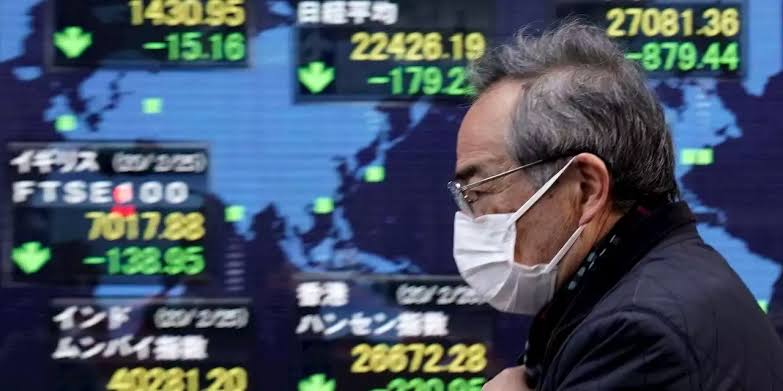Global stocks slip amidst disruptions as coronavirus cases spread
Global stock markets tumbled on Friday as disruptions to business from the spreading coronavirus epidemic worsened, stoking fears of a prolonged economic slowdown.
European shares opened sharply lower, with travel stocks bearing the brunt. The pan-European index was down 2.4% by 0856 GMT.
Germany’s DAX slid 2.4%, Britain’s FTSE 100 fell 1.8% and France’s CAC 40 fell 2.4%.
The MSCI All-Country World Index, which tracks shares across 47 countries, was down 0.72%.
After marking their worst weekly performance since the 2008 financial crisis, global stocks as measured by the index are up 1.7% this week, as sentiment recovered on the back of stimulus from policymakers to combat the economic fallout of the virus.
The U.S. Federal Reserve made an emergency interest rate cut of 50 basis points earlier this week. The Bank of Canada and the Reserve Bank of Australia also cut rates, with investors expecting other major central banks to soon follow suit.
Officials and companies in Britain, France, Italy and the United States are struggling to deal with a steady rise in virus infections that have in some cases triggered corporate defaults, office evacuations, and panic buying of daily necessities.
The outbreak spread across the United States on Thursday, surfacing in at least four new states.
“The interplay of virus containment fears and stimulus measures means that in the near term we expect market volatility to persist,” said Mark Haefele, chief investment officer at UBS Global Wealth Management.
Yields on U.S. Treasuries fell to a record low and Treasury futures jumped as investors increased bets that the Fed will follow this week’s surprise rate cut with further easing.
The yield on benchmark 10-year Treasury notes fell to a record low of 0.7650% on Friday.
Minneapolis Federal Reserve President Neel Kashkari said late on Thursday the Fed could cut rates further if needed.
Money markets are pricing in another 25 basis-point-cut from the current 1% to 1.25% range at the next Fed meeting on March 18-19 and a 50-basis-point cut by April.
Rapidly falling yields hammered the dollar, which fell to a six-month low versus the yen and close to a two-year trough against the Swiss franc.
Germany’s benchmark 10-year Bund yield fell to a six-month low within striking distance of last year’s record lows.
The flu-like virus emerged late last year in the central Chinese city of Wuhan and has since spread to more than 80 countries. It has claimed more than 3,000 lives, and though new infections have slowed in China there are concerns other countries are not prepared.
Travel restrictions and factory closings aimed at curbing the spread of the virus are expected to pressure global growth.
Many investors were awaiting the release of U.S. non-farm payrolls later on Friday. Recent U.S. economic data has been encouraging, but concerns about the epidemic are likely to overshadow any signs of a strong labour market.
Earlier in Asia, MSCI’s broadest index of Asia-Pacific shares outside Japan fell 2.1%, while Japan’s Nikkei stock index sank 2.94%. Australian shares were down 2.44%.
Shares in China fell 1.22%, while stocks in Hong Kong HIS, another city hard hit by the virus, fell 2.12%.
Against the Japanese yen, the dollar fell to a six-month low and was last at 105.77 yen. The greenback also sank to a two-year trough of 0.9410 Swiss franc.
Sterling traded near a one-week high versus the dollar.
The euro gained 0.3% to trade $1.1271. Markets in the euro zone are pricing in a 93% chance that the European Central Bank will cut its deposit rate, now minus 0.50%, by 10 basis points next week.
The single currency has now reversed all its earlier losses for the year, rising from below $1.08 a few weeks ago to above $1.12.
ING analysts said they were targeting $1.15 in the coming weeks as aggressive U.S. rate cuts contrasted with the limited room for action at the European Central Bank.
“For now, expect USD weakness vs G10 FX to continue, and the G10 FX segment outperforming EM FX, with carry trades under pressure,” they said in a research note.
Oil prices also fell due to worries that non-OPEC oil producers might not agree to output cuts even though global energy demand is weakening.
U.S. crude fell 1.63% to $45.15 a barrel, while Brent fell 1.8% to $49.10, with worries about a decline in global demand due to the virus outbreak and uncertainty about production cuts hurting prices.







